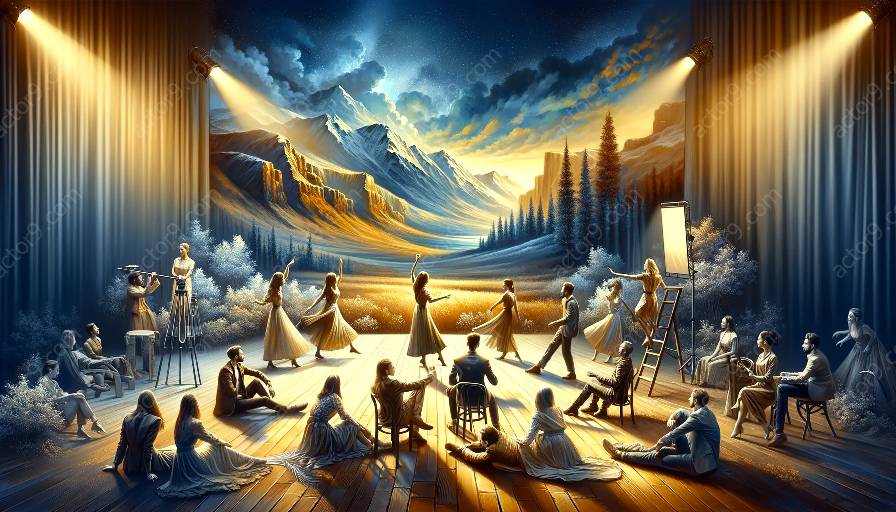Playback theatre, a form of improvisational theatre, is deeply rooted in the techniques of storytelling, improv, and live performance. With the advancement of technology, the impact of innovation on playback theatre performances has become a significant subject of exploration. As technology continues to evolve, it is essential to understand how it can complement and influence playback theatre techniques and acting strategies.
Evolution of Playback Theatre
Playback theatre, founded by Jonathan Fox and Jo Salas in the 1970s, traditionally revolves around live, in-person interactions where stories are shared by audience members and enacted by actors on stage. The presence of technology in early playback theatre was limited to basic lighting and sound systems.
Impact of Technology on Performance
Advancements in technology have expanded the possibilities for playback theatre performances. The integration of digital platforms, social media, and video conferencing tools has allowed for global reach and remote participation, altering the traditional dynamics of live performances. This shift has influenced the way stories are shared, received, and enacted.
Engagement and Connection
Technology has the potential to enhance audience engagement and connection during playback theatre performances. Through live streaming, virtual reality, and interactive platforms, audiences can participate from diverse locations, fostering a sense of community and inclusivity. This creates opportunities for a broader spectrum of storytelling perspectives to be showcased and shared.
Enhanced Storytelling Techniques
With the availability of multimedia tools, playback theatre actors and facilitators can integrate visual and audio elements into their performances, enriching the storytelling experience. This can lead to a more immersive and impactful narrative delivery while maintaining the core essence of interpersonal connections inherent in playback theatre.
Compatibility with Playback Theatre and Acting Techniques
The incorporation of technology in playback theatre performances aligns with the improvisational and adaptive nature of the art form. Actors' ability to respond in the moment, build rapport with audiences, and create authentic connections remains fundamental, whether in live or virtual settings. Similarly, acting techniques such as emotional truth, physicality, and vocal expression remain pertinent in the digital adaptation of playback theatre.
Adapting to Virtual Platforms
Playback theatre techniques are adaptable to virtual platforms, allowing for interactive storytelling and empathic responses despite physical separation. Empathic mirroring, fluid scene transitions, and emotional attunement techniques can be translated into the digital realm, enabling actors to maintain the integrity of playback theatre while embracing technological advancements.
Exploration of New Narratives
Technology opens doors for exploring new narratives and perspectives within playback theatre. With virtual experiences, performers can delve into various storytelling formats, multimedia incorporation, and cross-disciplinary collaborations, expanding the creative possibilities while staying true to the core principles of playback theatre.
Conclusion
In conclusion, the impact of technology on playback theatre performances is a multi-faceted exploration of how digital innovation can influence and enhance the traditional art form. By embracing technological advancements while maintaining the integrity of playback theatre and acting techniques, performers can create compelling, inclusive, and immersive storytelling experiences that resonate with diverse audiences, both physically and virtually.













































